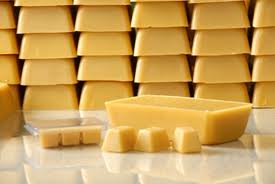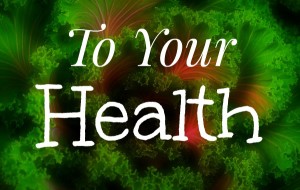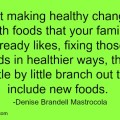The biochemistry of fat can be confusing, but it is essential to have at least a basic knowledge of different fats and how they affect our health so that we can break down the copious amounts of information applied by marketing companies and make informed choices for ourselves and our families.
 Fats and oils are called lipids and are made up of 3 fatty acids that are linked together to form a molecule called a triglyceride. If the lipid is liquid at room temperature, it is oil, but if it remains solid, it is a fat.
Fats and oils are called lipids and are made up of 3 fatty acids that are linked together to form a molecule called a triglyceride. If the lipid is liquid at room temperature, it is oil, but if it remains solid, it is a fat.
Fatty acids are oils and fats that are composed of chains of carbon atoms of various lengths, bonded with hydrogen atoms. In nature fats are classified according to the length of their carbon chains. Based on the length of that chain you may have a long, medium, or short fatty acid chain. Different fats have different configurations of carbon and hydrogen chains. These differences affect how they work in our bodies.
To simplify a bit, there are unsaturated fats, saturated fats, and fats that are a combination of both.
Unsaturated Fats:
If there is only 1 double bond in the carbon chain, it is a monounsaturated fat. But if there is more than 1, it is polyunsaturated.
Short chain fats are from 3 to 12 carbons in length and are found in butter, coconut oil, and palm kernel oil. These are healthy oils, especially for the brain and gastrointestinal track.
Monounsaturated oils with 14 to 24 carbons are found in Olive Oil, Lard, and Hazelnuts. These have been found to lower the risk of cardiovascular disease.
What About Saturated Fats?
 A truly saturated fat is as hard as wax and cannot be digested. Most fats that we refer to as saturated fat are not truly saturated, but are rather a combination of saturated and unsaturated fat. Animal fat is a prime example of a fat being called a saturated fat when in fact it is actually a combination of both kinds of fat.
A truly saturated fat is as hard as wax and cannot be digested. Most fats that we refer to as saturated fat are not truly saturated, but are rather a combination of saturated and unsaturated fat. Animal fat is a prime example of a fat being called a saturated fat when in fact it is actually a combination of both kinds of fat.
Examples of this are:
Beef fat, which is 46% saturated and 56% unsaturated fat
Chicken, which is 30% saturated and 70% unsaturated fat
Pork loin, which is 48% saturated and 48% unsaturated fat
Naturally occurring fats are not fully saturated.
The Dreaded Trans Fats
Most fats are in what is called a “cis” formation with the hydrogen atoms lined up on one side of the carbon chain. But sometimes a lipid has a hydrogen atom on either side of the carbon atom. When this happens, it is called a Trans Fat, or Trans-fatty Acid. Trans Fats do not function well in our bodies and should be avoided since they are abnormal fats and are associated with diseases such as heart attacks and stroke.
Trans Fatty Acids are polyunsaturated vegetable oils that have been partially hydrogenated, a process that adds hydrogen to the carbon chain to make the oil more solid. Trans Fats became popular because they are inexpensive to produce, easy to use and they give foods desirable flavor and texture. But they can have serious consequences for your long term health and should be avoided whenever possible.
The best way to avoid these Bad Fats is to make, rather than purchase, your holiday baked goods to avoid the use of convenience of boxed foods, such as instant mashed potatoes and stuffing. Today I will be giving you some holiday recipes that are easy to prepare, and much tastier than their store bought counterparts.
Deluxe Mashed Potatoes
 Peel and cube 8 large potatoes. Cover with water and cook on medium heat until potatoes are fork-tender. Drain water and add ½ cup organic chicken broth and return to stove. While the broth begins to heat, mash potatoes with a hand masher until the potatoes are the consistency desired. Reduce to low heat and blend in 4 Tbs. organic butter and ½ C of sour cream. Sprinkle top with previously cooked bacon if desired for a festive garnish and added flavor.
Peel and cube 8 large potatoes. Cover with water and cook on medium heat until potatoes are fork-tender. Drain water and add ½ cup organic chicken broth and return to stove. While the broth begins to heat, mash potatoes with a hand masher until the potatoes are the consistency desired. Reduce to low heat and blend in 4 Tbs. organic butter and ½ C of sour cream. Sprinkle top with previously cooked bacon if desired for a festive garnish and added flavor.
Depending on personal appetites this will safely serve 6 adults, but when it comes to the holidays I always err on the side of making extra.
Holiday Stuffing
Serves 6 adults Bake at 350° F for approx.. 40 mins.
Prepare separately:
One large bowl of cubed bread
1 medium onion chopped and sauteed in butter
Combine in a medium sauce pan:
The sautéed onion
1 stalk of celery sliced thin
1 Cup dried cranberries
2 Tbs. organic butter
1 Cup turkey drippings, or packaged broth if the drippings are being used for gravy. You may use chicken if you cannot find packaged turkey broth.
Simmer the drippings with ¼ tsp. sage for 2 minutes before adding it to the cubed bread.
It may be necessary to add additional broth if you are using a dense bread so use your best judgment as to the moisture content of the stuffing.
Mix together and spoon into a butter covered baking dish. Cover with foil if the dish does not have a lid.
These are healthy homemade dishes that don’t really take a lot of time to prepare and taste so much better than anything that comes out of a box. Of course family tastes differ, and you may want to make individual variations, which are perfectly fine. The main thing is to use wholesome ingredients, trying not to rely on prepackaged foods that will be high in refined sugars and bad fats.
If you have children at home, get them involved. Even a small child can help make the stuffing by tearing up the bread into a bowl. It doesn’t matter if the bread isn’t in picture perfect cubes, and what are the holidays for if not to spend with your family?
**While the word of wisdom gives us basic guidelines for health, it leaves the interpretation of those guideline up to the individual members. This blog is not intended to replace your medical professional or the divine revelation of the Word of Wisdom, but rather it is practical knowledge that I have accumulated over the years in my own pursuit of a healthier lifestyle which I am passing along in the hopes that it will benefit others.**
About Denise Mastrocola
Denise is a Michigander turned Pennsylvanian, who has been writing stories since Elementary School. Denise won an award at the annual Lansing Youth Talent Show, when she was in 10th grade, for a short story entitled Procrastination is Fatal, but didn’t decide on writing as a career until she was 28 years old. While homeschooling her older children she spent 4 years working through a course from The Institute of Children’s Literature.
Through the years Denise’s children have had a variety of health issues, many of which have been linked to various sensitives; having spent more than 20 years researching and trying different things Denise has a boots on the ground view on healthier living.
Denise currently writes for 2 blogs and has several books in different stages of completion. She is planning to break ground in e publishing, and hopes to have her first Historical Fantasy book which is set during the renaissance, “Lisa, My Lisa?” ready by the first of the year.
Twitter •







